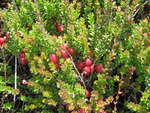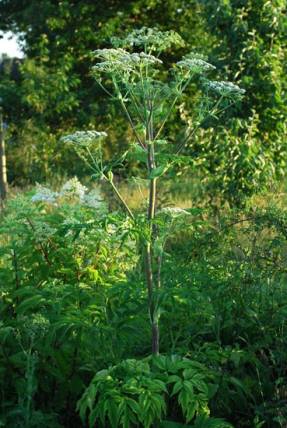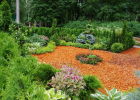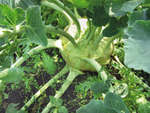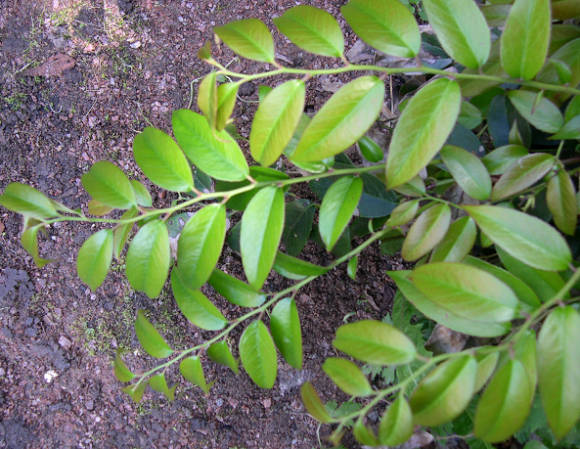Decorative leafy begonias create coziness in the room with the beauty of their leaves. You can collect large collections of begonias with amazing shapes and colors that will surprise your guests. Their leaves can be either monochromatic or multi-colored, with various spots and edges.

Begonia name Sea urchin translates as "Sea Urchin". Its leaves do look thorny. The leaf is spirally twisted, deeply dissected, emerald green, with black-brown strokes along the surface and edges.
There are so many of them!

Begonia is one of the most popular decorative flowering and decorative deciduous plants. They belong to the Begonia family, which has more than 1600 plant species. In its natural environment, this culture can be found in tropical and subtropical regions of America and Africa. Florists have been growing the culture as a houseplant since the 17th century. And she came to Russia 200 years ago.
The growth of decorative deciduous begonias varies from 20 to 40 cm, depending on the variety. The colors of the leaf plates come in a variety of colors and shades: from emerald green to red and burgundy. In addition, there are often patterns on the leaves. These plants are also blooming. But their buds are of no decorative value, since they are small and inconspicuous.
Begonia Looking Glass Is a complex hybrid obtained by crossing four begonias (Begonia Lana x Begonia Orpha x Begonia Hannah x Begonia Mandarin). The metallic-silver leaves are pierced with green (gray-green) veins. The reverse side of the leaves is red ("burgundy wine"). The flowers are pink.
DS-Sweet Life - medium-sized, very beautiful and bright begonia. The main field of the leaf is filled with translucent red, through which white shines through. The center and border along the edge of the sheet are dark brown.
Begonia Begonia soli-mutata - a low type of bush-shaped begonia with creeping fleshy shoots. The thickened rhizome is located at a shallow depth in the soil. The leaf blades are broadly oval, brownish-dark green with bright light green zones along the veins. The surface of the leaves is finely warty, velvety.
 |  |
Light leaves of the variety DS-My Joy have a wide burgundy-brown border covered with pink peas. Between this border and the main, light field of the leaf, there is a bright green border, along which pink peas are also found. The leaf is rolled into a snail.
This is begonia Palomar prince ("Black Prince"). The variety has wonderful velvet leaves of an unusual shape and very discreet flowers. As the name suggests, the leaves are dark green and close to black in color.
 |  |
Begonia Green gold - a plant with large rounded leaves, twisted in a spiral. Their color is predominantly silver-blue, with a brown leaf border. The shortened leaf stalks give the plant compactness.
DS-Pearls - compact variety, perfectly forms a bush. Leaves are textured, shiny, pearl color. Shadows of a pale light green color play on the leaf, depending on the angle of illumination, emphasizing the texture of the foliage. An adult shrub about the size of a standard violet.
 |  |
DS-Female Weapon can be recognized by pointed light leaves with a green mesh. The leaf has a bright red center of the leaf and the same red border.
DS-Lukomorye - medium-sized variety, independently forms a lush bush. The leaves are dark, mossy-green in color, with abundant gray specks, more dense and merging in the middle of the leaf, and sparse small ones along the edges of the leaf.
 |  |
Light green leaves slightly curled at the base DS-Downpour framed by a wide dark pink border and all this is evenly flooded with a silver "shower".

Beauty secrets
Home care for begonia is simple. It is important to properly water, fertilize, transplant the plant, monitor the humidity and air temperature.
- The room temperature should be at the level of + 15 ... + 25 ° C.
- Begonia in winter must be protected from drafts and temperature changes.
- It is best to grow it in a southwest or south window, but protected from direct sunlight, which leaves severe burns on the leaves.
- In winter, when the heating is turned on, it is recommended to cover the batteries with a damp towel against dry air.
- In the summer, begonia likes abundant watering, but it is not recommended to get on the leaves, brown spots may remain. In the autumn-winter period, watering is reduced. It is better to water with settled water.
- Begonias are susceptible to aphid and spider mite attacks, prevention is recommended in spring and autumn, Fitoverm can be used. If, nevertheless, the tick has damaged the plant, you can spray it with such preparations as: Sunmight, Judo, Actellik, Fufanon.
- When watering, the plant is fed with complex fertilizers. You can apply Master with the formula 18:18:18 or 17: 6: 18 with each watering (1 g per 1 liter of water).
- In the event that the soil is fresh after planting (transplanting), then fertilizing is applied no earlier than after 30 days. In winter, if begonias grow without light, the plants need to be fertilized once every 30-35 days.
Begonia is planted in loose and fertile soil, adding perlite or vermiculite.
 |  |
It is recommended to replant a young plant in the middle of spring every year. When transplanting, it is necessary to take a pot that is larger in size than the previous one.
Pour expanded clay drainage at the bottom of the pot, place a flower there with a little soil, and fill the roots with fresh earth. Water a little.
In insufficient light, begonia leaves may turn pale. If you notice this behind them, it is better to move the plant to a more sunny place.

Reproduction of begonias: to yourself, to a friend and ...
Most types of domestic begonias reproduce easily. You need to take a small leafy cutting about 5 cm long, place it in a glass of clean water and wait for the roots to appear. The best time for this is spring. The petiole with roots should not be deeply buried in the substrate - 5-7 mm is enough. So that the leaf does not pull the roots out of the soil with its weight, you can fix it with the help of improvised means.

Reproduction is also available in parts of the leaf blade. It needs to be cut so that a central vein remains on each piece.

After that, we plant parts of the sheet in loose soil, and put them in a greenhouse from a transparent container. During rooting, you need to slightly moisten the substrate. The greenhouse can be removed when the roots appear on the fragment.

After 1.5-2 months, babies appear at the planted begonia fragment. They can be deposited from the mother fragment when 2-3 independent leaves are formed.

For a start, children need to be seated in 100-gram cups.
On a note
Looking Glass begonia propagates by cuttings of the stem: you can cut off a part of the stem with one or two leaves and root it in the ground using a greenhouse.
 |  |  |
Photo by the author
Special issue of the newspaper "My favorite flowers" No. 4, 2019 "Indoor plants with beautiful leaves"

